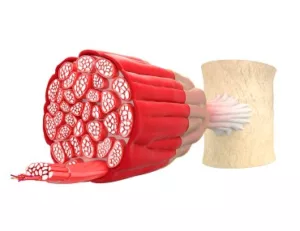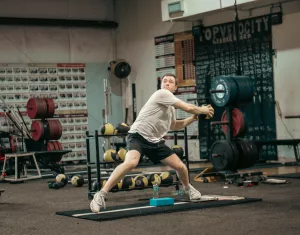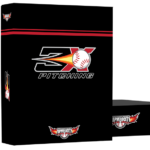 Looking for How much time should pitchers take off? MUST READ
Looking for How much time should pitchers take off? MUST READ
Pitching is a physically demanding exercise in baseball, putting significant strain on the muscles of the shoulders and arms. The throwing motion's repetitive nature, combined with the high-intensity activity involved, can cause significant changes in muscle cross-sectional area (CSA) and range of motion. These modifications make pitchers more vulnerable to injuries and stress the importance of understanding the required recovery time. This understanding is critical to ensuring pitchers' long-term health and optimal performance. In this article, we will look at how much time pitchers should set aside for rest in order to assist the recovery of their infraspinatus muscle and restore a complete range of motion in their shoulders after a live-game baseball throwing session.
Pitching puts a lot of strain on the shoulder and arm muscles, and the repetitive motion, combined with the intensity of the sport, can cause considerable changes in muscle CSA and range of motion. These modifications enhance the risk of injury, emphasizing the need of understanding the required recovery time for pitchers. Pitchers' long-term well-being and performance must be prioritized by allowing enough time for their bodies to recover. This article will discuss how much time pitchers should take off following a live-game baseball pitching session to aid in the recuperation and regeneration of their infraspinatus muscle and shoulder range of motion. Pitchers can improve their performance and reduce their risk of injury by knowing and adopting suitable rest intervals.
Pitching's Effect on Muscle CSA and Range of Motion
 Pexa et al. studied changes in infraspinatus CSA and glenohumeral range of motion before and after pitching, as well as in the days after pitching. The study included ten great collegiate baseball pitchers and yielded some significant results.
Pexa et al. studied changes in infraspinatus CSA and glenohumeral range of motion before and after pitching, as well as in the days after pitching. The study included ten great collegiate baseball pitchers and yielded some significant results.
- Muscle CSA Changes: The dominant limb's infraspinatus CSA rose considerably after pitching on day 1, but reverted to baseline on day 2. This suggests that the muscle initially swells and inflames as a result of the pitching session. The CSA recovery time is brief, lasting only around two days.
- Recovery of Range of Motion: The dominant and nondominant limbs' total rotation range of motion (TROM) did not change until day 5 and day 3, respectively, when they increased. This shows that following pitching, the range of motion steadily improves. It is crucial to note, however, that the internal rotation range of motion (IRROM) in the dominant limb was drastically reduced for three days after pitching. On day 4, it reverted to baseline, with no corresponding changes noted in the nondominant limb.
- External Rotation Effects: The dominant limb's external rotation increased immediately after pitching but reverted to baseline by day 1. This shows that the exterior rotation range of motion is temporarily affected but quickly recovers.
How much time should pitchers take off?
Given the study's findings, it is critical for pitchers to provide enough time for their infraspinatus muscle and shoulder range of motion to heal. According to the research, pitchers should rest for at least four days after a live-game pitching session. This time frame allows for the healing of the infraspinatus CSA and the restoration of the internal rotation range of motion. Pitchers can lessen their risk of injury and preserve peak performance by allowing their bodies to rest.
Enhancing Recovery and Refining Pitching Skills
 The 3X Pitching Velocity Program understands the significance of rehabilitation for pitchers over the offseason. The program provides an in-season program that blends efficient strength training and low-stress throwing through drill work to promote optimal recuperation while concurrently honing pitching skills. This all-encompassing strategy not only benefits rehabilitation but also attempts to improve overall performance on the pitch.
The 3X Pitching Velocity Program understands the significance of rehabilitation for pitchers over the offseason. The program provides an in-season program that blends efficient strength training and low-stress throwing through drill work to promote optimal recuperation while concurrently honing pitching skills. This all-encompassing strategy not only benefits rehabilitation but also attempts to improve overall performance on the pitch.
The addition of particular strength training activities is a significant component of the in-season program. These workouts are specifically designed to target the muscles and movements involved in pitching, while also developing strength, stability, and injury prevention. Pitchers can improve their muscular endurance and ability to resist the physical demands of the game by undertaking an organized strength training plan. This, in turn, speeds up healing and lowers the chance of overuse injuries.
In addition to strength training, drill work emphasizes the value of low-stress throwing. These drills are designed to improve throwing mechanics, command, and arm health. Pitchers can continue to hone their skills without putting undue strain on their arms by using low-stress throwing techniques. This allows for proper rehabilitation while still refining pitching skills for their next appearance.
Within the 3X Pitching Velocity Program's in-season program, the mix of effective strength training and low-stress throwing activities produces a balanced approach to recuperation and skill refining. Pitchers can improve their physical talents while reducing their risk of injury by optimizing recovery through suitable strength training and employing low-stress throwing techniques. This all-encompassing strategy not only increases longevity in the sport, but it also assists pitchers in maintaining a high level of performance during the grueling in-season schedule.
FAQs: How much time should pitchers take off?
- How long does it take the infraspinatus muscle to heal after pitching?
Following a pitching session, the infraspinatus muscle usually takes two days to heal. - Is it important to rest after pitching?
Yes, resting after pitching is essential for muscle regeneration and injury prevention. - Can pitchers return to the mound immediately after a game?
It is not advised to pitch immediately following a game. Allowing enough recovery time is critical for sustaining peak performance and lowering the chance of injury. - What happens if pitchers do not get enough rest?
Inadequate rest can result in overuse injuries, poor performance, and long-term shoulder muscle damage. - Should pitchers do any special recuperation routines during their offseason?
During their recovery phase, pitchers might benefit from shoulder mobility exercises, stretching, and modest strengthening activities. However, it is critical to seek professional advice to ensure optimal technique and avoid further strain. - How can pitchers make the most of their recovery time?
Pitchers can optimize their recovery time by getting enough rest, eating a balanced diet, staying hydrated, and following an organized recovery strategy.
Elevate Your Game with the 3X Pitching Velocity Program
 Are you ready to take your pitching game to the next level? Don't pass up the chance to get the revolutionary effects of the 3X Pitching Velocity Program. Whether you're a seasoned pitcher or a beginner looking to improve your talents, this program is designed to improve your velocity, mechanics, and overall performance on the mound.
Are you ready to take your pitching game to the next level? Don't pass up the chance to get the revolutionary effects of the 3X Pitching Velocity Program. Whether you're a seasoned pitcher or a beginner looking to improve your talents, this program is designed to improve your velocity, mechanics, and overall performance on the mound.
You'll receive access to a thorough training routine specifically designed to optimize your potential with the 3X Pitching Velocity Program. This program addresses all areas of your pitching development, from advanced strength training routines targeting key pitching muscles to low-stress throwing drills that polish your mechanics.
Don't put off discovering your full throwing potential any longer. Make the investment in your future as a strong pitcher. Join the countless athletes who have seen significant gains in their velocity and performance as a result of the 3X Pitching Velocity Program. Visit our website to learn more and get started on your path to becoming a more explosive and productive pitcher. Your success is just around the corner!


